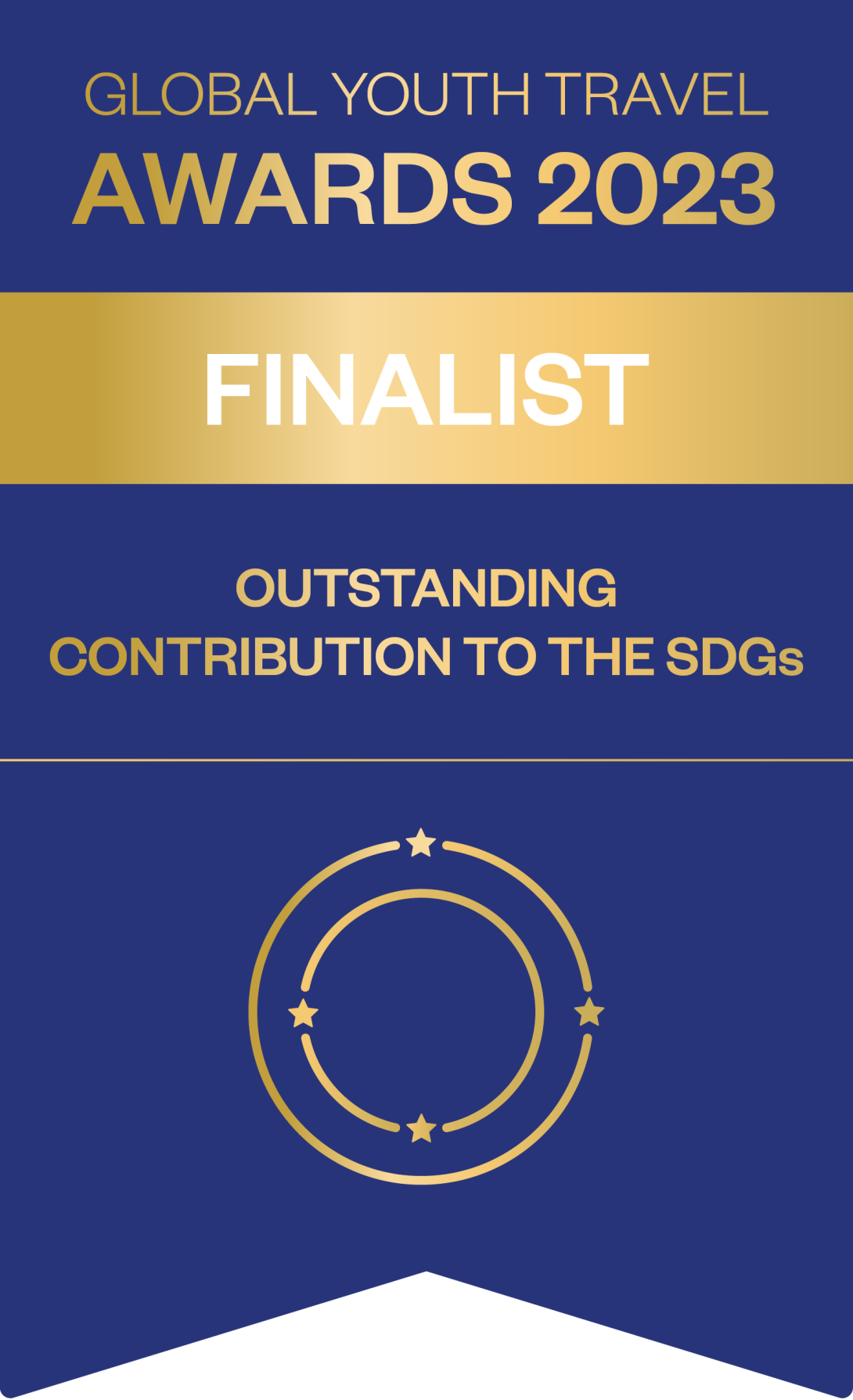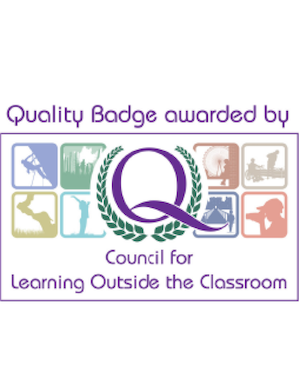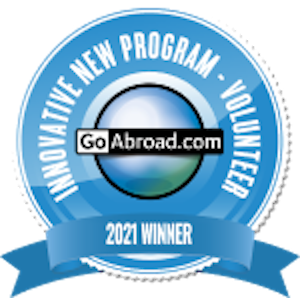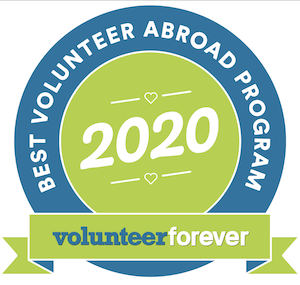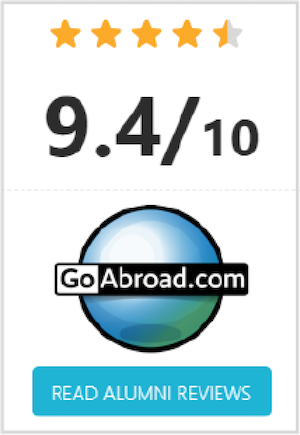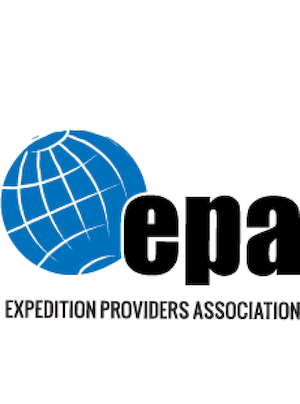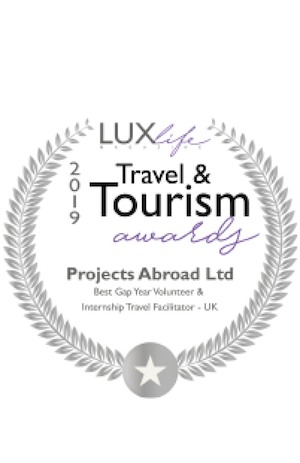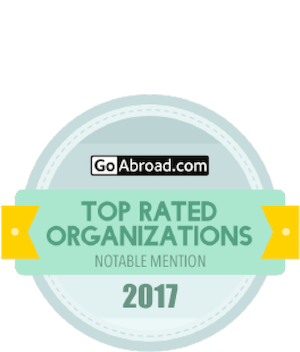I went on the Global Gap Year, which consists of three semesters: I spent eight weeks in South America, six weeks in Africa, and then 10 weeks in Asia. You’re nervous about meeting new people, going somewhere new… I’ve never been to any of these places, and I was essentially there by myself. But from the moment you land, you’re surrounded by a massive team of people, and all the volunteers are lovely. It was nerve-wracking, but very exciting — I think the two combine to make the experience what it is.
The Projects Abroad team is amazing. You land at the airport and they take you straight where you need to be. I was nervous going to my very first destination, but after that I barely checked the arrival procedure because it was all so seamless and obvious. They’re right there with their tee-shirts and signs, it’s very simple and safe. It really puts your mind at ease when you’re flying to a new country for the first time.
Semester 1: South America
My first gap semester was incredible. I started by flying out to Peru for four weeks. I’ve never been to South America before, but it was an exciting opportunity to be thrown in right at the deep end: knowing that I was walking into the Amazon Rainforest, when I was sitting at home just the day before. I spent the first two weeks doing animal and agricultural conservation (which I loved), before heading to Cusco.

Projects Abroad are very flexible: we mentioned to our project coordinator that we wanted to go to Rainbow Mountain, and they set it up, even though it wasn’t on the program. It was amazing, as was Machu Picchu… But sometimes it’s the small things. When I was in the Amazon Rainforest, we did these night walks where we went out looking for spiders, snakes and frogs. It’s pitch black, the noise from the animals is deafening. There was an opening in the canopy above, and they said to turn our torches off. We looked up and we could see the Milky Way. The stars were amazing. The sound was amazing. I’d never seen darkness like it. And just a small thing like that was an unforgettable experience.

In Puerto Maldonado, you get a two-hour boat up the river into a reserve, where you’re in cabins. You’re showering in water sourced from the local creek, it’s all solar panels. In most of South America, they only speak Spanish, and that’s all part of the experience. We got to learn Salsa dancing, and we had language lessons. Every day was different in Peru. One day I got up at five to help with bird banding to better understand the birds’ migratory patterns and behavior. Then we’d go trail-clearing with machetes, where we’d mark the trails so people don’t get lost, or cut down the paths. Sometimes you’d have an evening activity, or just have dinner, and sit around playing cards.
Next, we flew to the Galapagos islands in Ecuador. We did two weeks of conservation with giant sea tortoises and sea lions, which was absolutely amazing — something I’d never seen before, the beaches were stunning. The host mum at the reserve didn’t speak any English, which meant we were immersed in local life. Luckily, we had a translator to hand!

Semester 2: Africa
After a stint back home, it was time to head off for my second semester, with six weeks in Africa.
We kicked off with two weeks in Kenya, and this was my favorite project of them all: lion and giraffe conservation at the massive Soysambu reserve, where every day is pretty much going on safari in a Jeep. We also went into the local communities and built these environmentally-friendly stoves that mean less smoke, less chopping down wood, and just a more sustainable solution.

We then flew to Tanzania for four weeks, where you choose from among six or seven different projects. I opted for teaching and care, plus microfinance. We were staying in a beautiful, massive mansion with two kitchens and two living-rooms, living with a host family who really made you feel at home. It’s a great immersion in local culture: you learn about their cuisine, you get treated to home-cooked meals. We had language lessons in Swahili, too.
We also went to Zanzibar for the weekend, which wasn’t on the program. We went on a sunset cruise, and I even got the chance to go sky-diving, which is crazy — I’m afraid of heights, it’s not something I’d normally do!

It was in Tanzania where I felt I’d made the most impact. We took the dala dalas minibus taxis a long way out to a school that Projects Abroad built and funds: without it, these Maasai children wouldn’t have any opportunity to get an education. The school provides them with a daily meal, too. I really felt I was making a difference teaching the kids there. They were so smart and ambitious, it was amazing to see.
My dad flew out, and we climbed Kilimanjaro together. Getting to the summit was the highlight of my year. It was the most challenging thing I’ve ever done, and one of my biggest achievements to date.

Semester 3: Asia
I had two weeks back home to reset over Christmas with family and friends, and then headed to Nepal for five weeks: building classrooms for a school in Kathmandu, followed by rhino conservation in Chitwan National Park — another of my favorite projects. We even managed to track down a male rhino that had never been registered before (we called him ‘Tankerbell’!).
Nepal was definitely where I had the best food. Our host family made us these restaurant-grade dishes every night: curries, kathi rolls… The local stuff there is just absolutely incredible. We got to try making our own momos, too. Speaking of trying new things, I got to give yoga a go — but the less said about that, the better!
The school in Nepal was destroyed by the earthquake in 2015 and is being built back from the ground up by Projects Abroad. There were 15 other classes being taught there while we were building more classrooms, and it hit home that without Projects Abroad, these kids just wouldn’t be able to learn or progress. It’s really important work. On the last day, once we had finished building the school in Kathmandu, we were gifted these small scarves and the red dot of good luck on our foreheads to send us off.
Our final five weeks were in Phnom Penh, Cambodia’s capital, where we worked on care and public health projects, plus had lots of free time to explore. We went to the Killing Fields, which… I really recommend everyone go read about. This was a seriously pivotal point in Cambodia’s history, and actually visiting the site itself was powerful.
We got a water blessing at the local temple, where a monk said a prayer and doused us in water. These were the kinds of moments where we realized we were making a real difference. You really do feel like you’re adding to the community. Some of my travel buddies were studying nursing and medicine which meant it was a really useful addition to their degrees, but with most of the projects, I personally had no previous experience.

Accommodation
In terms of your living set-up, there’s a varied range of different accommodation: reserves in Kenya and Nepal, guesthouses in Cambodia with 20 or 30 other volunteers, and host families in Kathmandu and Tanzania, which makes it special. The host families are great, they ask you to treat them like your own mum and dad and go to them with any issues, which makes it all really wholesome and lovely. I really enjoyed all the food. They’re very good at catering to vegetarians and vegans, and any allergies you might have.

A really good part of the Global Gap Year is you get to do the volunteering, but you also get to really travel as well: Projects Abroad organized excursions like Machu Picchu, a week in Siem Reap and Angkor Wat in Cambodia. What’s great about the Global Semesters and Global Gap Year is because it’s organized for you, it takes away a lot of the stress. You don’t need to worry about all the transport and accommodation, which is brilliant when you’re working five days a week. It’s nice to know you have plans for the weekend. We had loads of cultural trips, it was a real mix, and to me that was the best part. I’m not great at packing, and there was a kit list for each country which helped, too. You get access to a special page when you sign up to a project, which is packed full of all the essential information you need. One thing I will say is: packing cubes. These will completely transform your travel experience, I promise!

The Global Gap Year was excellent for developing soft skills and social skills, especially because everyone is from different countries, backgrounds and cultures. You’ll make lifelong friends: everyone else is from all over the world, and a massive part of it is the people you meet along the way. It’s a great experience because of that. And if you get homesick, pretty much all the locations have good Wi-Fi, so you can stay in touch with friends and family easily.
Doing your part with something like Projects Abroad is so important. Traveling is great, but the volunteering aspect of traveling, learning the language, the local culture… I think that’s much more valuable.
This is a personal account of one volunteer’s experience on the project and is a snapshot in time. Your experience may be different, as our projects are constantly adapting to local needs and building on accomplishments. Seasonal weather changes can also have a big impact. To find out more about what you can expect from this project we encourage you to speak to one of our friendly staff.
Our accreditations


